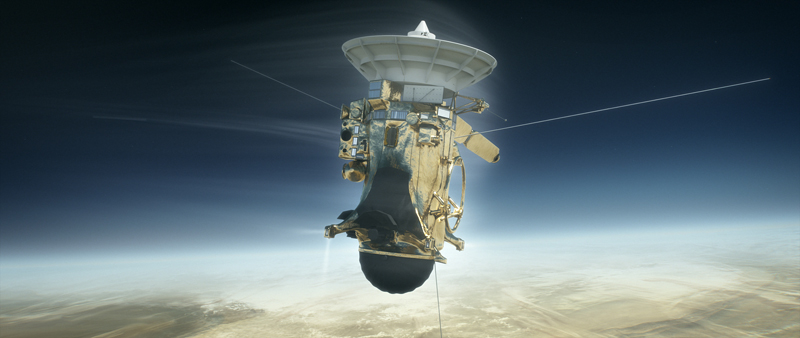
NASA’s mission exploring Saturn and its moons comes to an end this week as the Cassini spacecraft deliberately dives toward the planet and burns up in its atmosphere. DAVID ADAMS looks back at its 13 year journey…

NASA’s mission exploring Saturn and its moons comes to an end this week as the Cassini spacecraft deliberately dives toward the planet and burns up in its atmosphere. Here are some key facts about the 13 year journey..
• The planet Saturn, the target of the Cassini exploration, is a gas giant with a diameter of more than 116,000 kilometres (about nine times the size of Earth). It’s located about 1.4 billion kilometres from the Sun, about 10 times the distance of Earth. A day on Saturn is the equivalent of 10.7 Earth hours and a year about 29 Earth years. The effective temperature is -288 degrees Fahrenheit.
• Saturn’s rings, ‘discovered’ by Galileo in 1610, contain billions of ice particles ranging from dust-sized grains to a few as large as mountains and are believed to be the remains of comets, asteroids and moons that broke up before reaching the planet. The rings orbit at different speeds around the planet.
• The Cassini spacecraft was launched from Cape Canaveral, Florida, on 15th October, 1997, on a Titan IVB/ Centaur launch vehicle. It spent seven years journeying to the Saturn system, performing two fly-bys of Venus as well as fly-bys of Earth and Jupiter and passing through the asteroid belt on its way before arriving in 2004.
• Bolted to the Cassini spacecraft throughout its journey was a European Space Agency probe, named Huygens (the mission was officially known as Cassini-Hugyens mission and was a partnership between NASA, the ESA and the Italian Space Agency). It detached from Cassini upon its arrival in Saturn and took a three week journey to the moon Titan. It landed on Titan – Saturn’s largest moon on 14th January, 2005 – and survived 72 minutes on the surface. It remains the only landing of a spacecraft in the outer solar system.

One of Cassini’s final views of Saturn, taken on 11th September. PICTURE: NASA/JPL-Caltech/Space Science Institute
• Upon arriving in the Saturn system, Cassini discovered two previously unknown moons – now named Methone and Pallene, bringing to 60 the total number of moons orbiting the planet. Six new moons were discovered in total during its exploration of Saturn including Aegaeon (the smallest of Saturn’s moons with a diameter of just 0.3 kilometres) which was found embedded in one of Saturn’s rings.
• The first fly-by of one of the moons took place on 10th June, 2004, when the Cassini probe passed within about 2,000 kilometres of Phoebe.
• Cassini became the first spacecraft to orbit Saturn on 1st July, 2004.
• Cassini’s primary mission was successfully completed on 31st May, 2008, but it was extended for a further two years. Its discoveries included finding new, previously unseen, faint rings around Saturn as well as gaining a far greater understanding of the rings and the moons that orbit the planet. Cassini also witnessed the largest storm ever observed on a planet from an interplanetary spacecraft – a 15,000 kilometre long storm which stretched right around the planet’s northern hemisphere.
• In 2010, NASA decided to extend Cassini’s mission a second time, this time until 2017, enabling the spacecraft to observe seasonal changes in the Saturn system over a period which equates to almost half of Saturn’s almost 30 year orbit around the Sun. Its journey will finally come to an end on 15th September when, having made a series of 22 weekly dives between Saturn and its rings, it plunges into the atmosphere and burns up like a meteor.
• During its mission, Cassini will have completed 294 orbits of Saturn, 162 targeted moon flybys and travelled about 7.8 billion kilometres. It will have executed 2.5 million commands during its mission and collected 635 GB of data including some 450,000 images.
For more on the Cassini mission, see https://saturn.jpl.nasa.gov.





